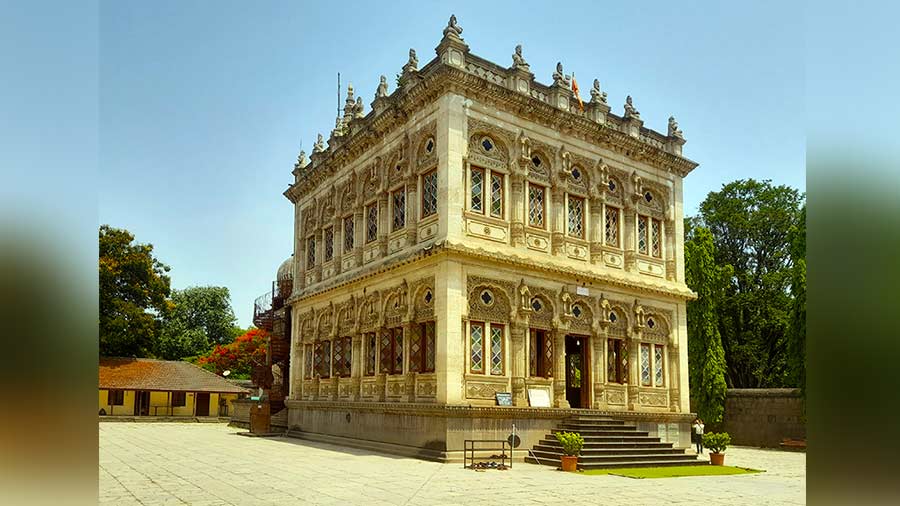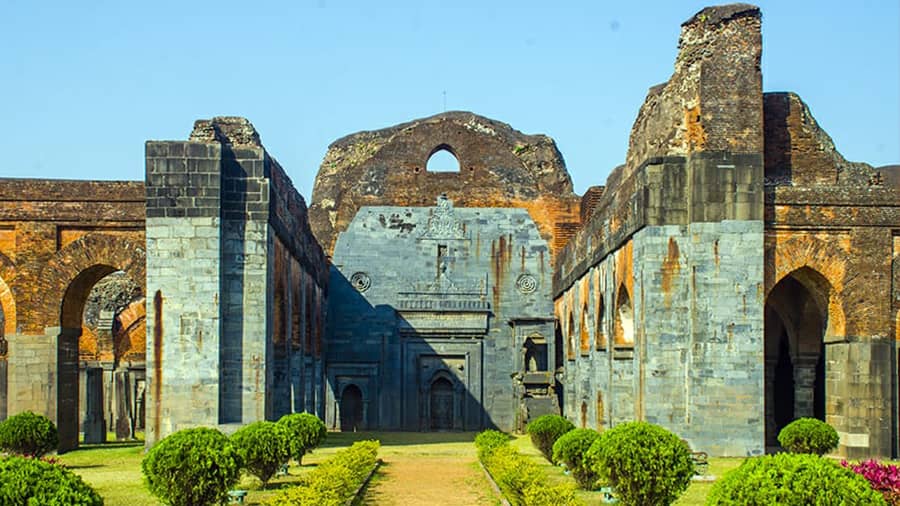Green Park is an upscale affluent neighbourhood in south Delhi that has all the amenities of a rich cosmopolitan culture along with large residential and commercial areas. It is probably the most unlikely place to have medieval ruins but when it comes to ruins, Delhi has its share of surprises.
Delhi is literally littered with historical monuments. They are found in the most unlikely of places including posh neighbourhoods and traffic roundabouts. As famous author and historian William Dalrymple mentions in his book, The Last Mughal, “…. of the great cities of the world, only Rome, Istanbul and Cairo can even begin to rival Delhi for the sheer volume and density of historic remains.”
Green Park area has as many as five medieval structures protected by the Archaeological Survey of India (ASI). The structures, dating back to the Tughlaq and Lodi period, share space with modern high rise residential complexes and air-conditioned shopping malls. All the five ASI sites are located within walking distances and the tour can be extended further to the Hauz Khas Park, which also has its share of medieval monuments.
Barakhamba
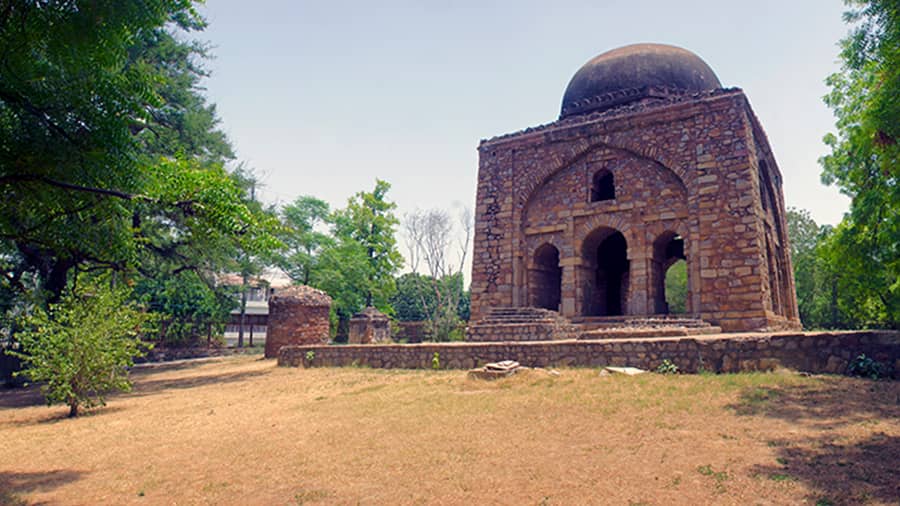
Barakhamba
Literally meaning 'the 12 pillars', the tomb consists of four robust corner pillars and each side has two slender pillars. The square structure is topped with a massive dome. Although it is a tomb, no cenotaphs remain inside it. But you can still see a number of gravestones outside the Barakhamba. Apart from the scattered graves the complex also contains a dry well, a curious bastion-like structure and a square block-like structure. The building probably dates back to the Lodi period (1451–1526).
Sakri Gumti
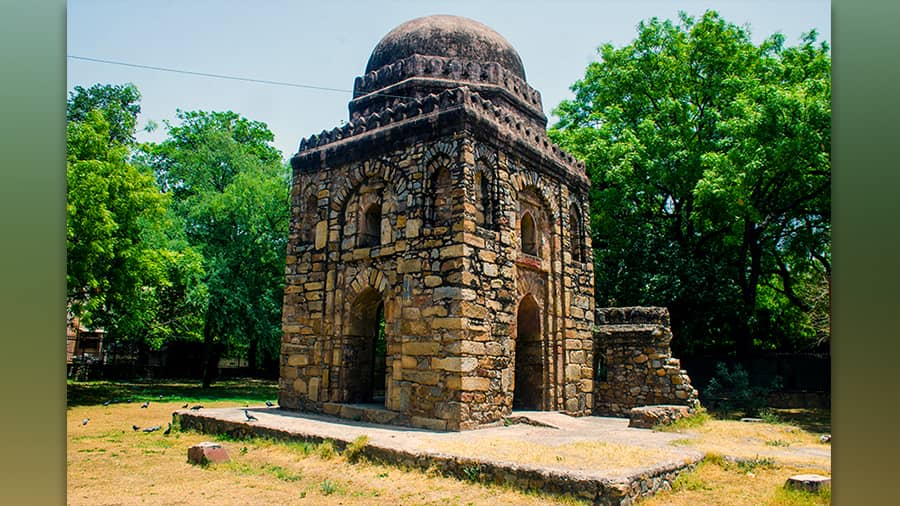
Sakri Gumti
The name means 'the narrow dome' — an edifice that consists a slender structure topped with a dome. Here, too, nothing much is known about the background of the structure. It probably dates back to the late 15th century and was most likely a gateway to some complex that has since been lost.
Dadi Poti’s Tomb
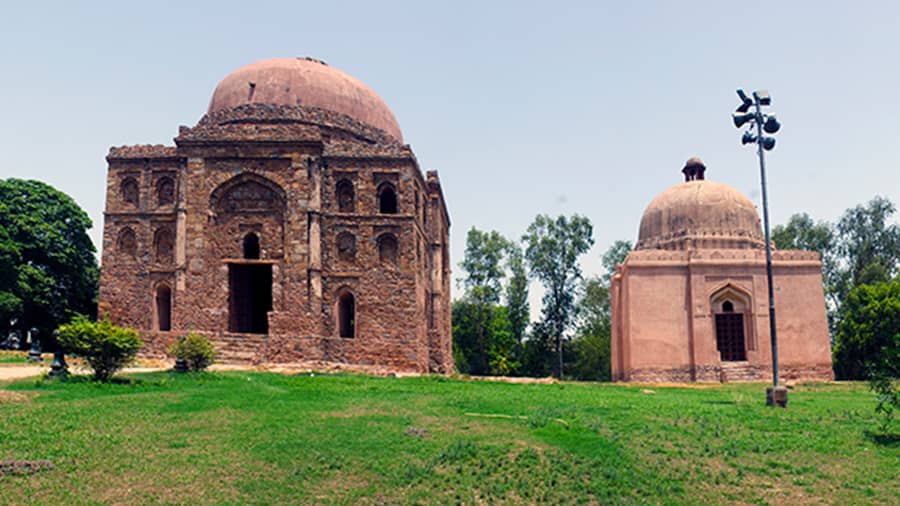
Dadi Poti’s Tomb
The complex houses two tombs of different sizes. The larger one is known as the tomb of dadi (grandmother) and the smaller one is the tomb of poti (granddaughter). But no one knows who this famous grandmother and granddaughter duo was. Even historians have no idea about the persons buried there. The bigger tomb, which seems three storied from outside, is actually a single-storey tomb housing several graves. According to architectural evidence, it belongs to the Tughlaq period (1321–1414). The smaller tombs have sloping walls and the dome is crowned with a lantern. Architectural evidence shows it to be of the Lodi period (1451–1526).
Chhoti Gumti
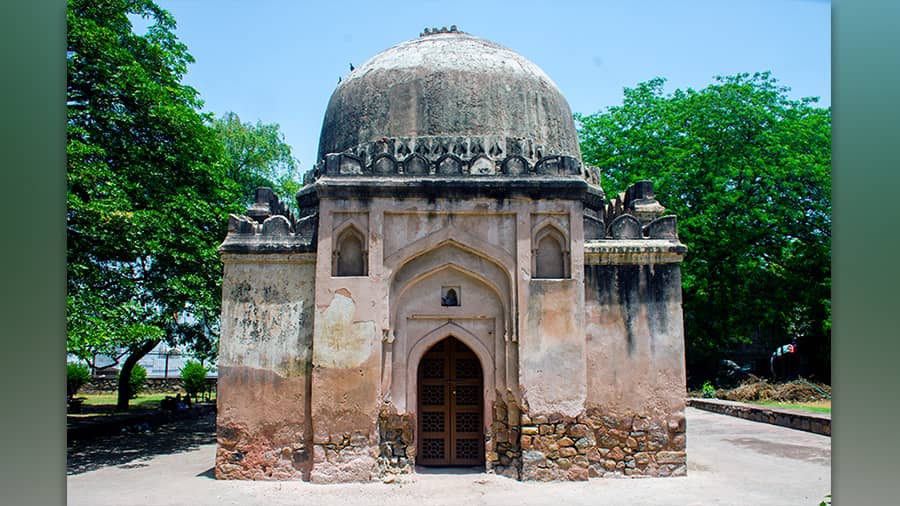
Chhoti Gumti
Literally meaning 'a small dome', it has a stout structure topped with a dome. It has a plastered exterior with decorated arches. There are ornamental battlements around the base of the dome. It houses a grave but no one knows whose it is. Architectural evidence shows that it was constructed during the Lodi period (1451–1526).
Biran ka Gumbad

Biran ka Gumbad
The previous four structures are all located along the same road but Biran ka Gumbad is located slightly north of these structures. Biran ka Gumbad literally means 'the tomb of the brother' and can be an extension of the dadi-poti lineage. The structure has high-ceilinged single chambers. The exterior is decorated with arches arranged in rows that give it an appearance of a double-storied structure. This probably also belongs to the Lodi period (1451–1526).

